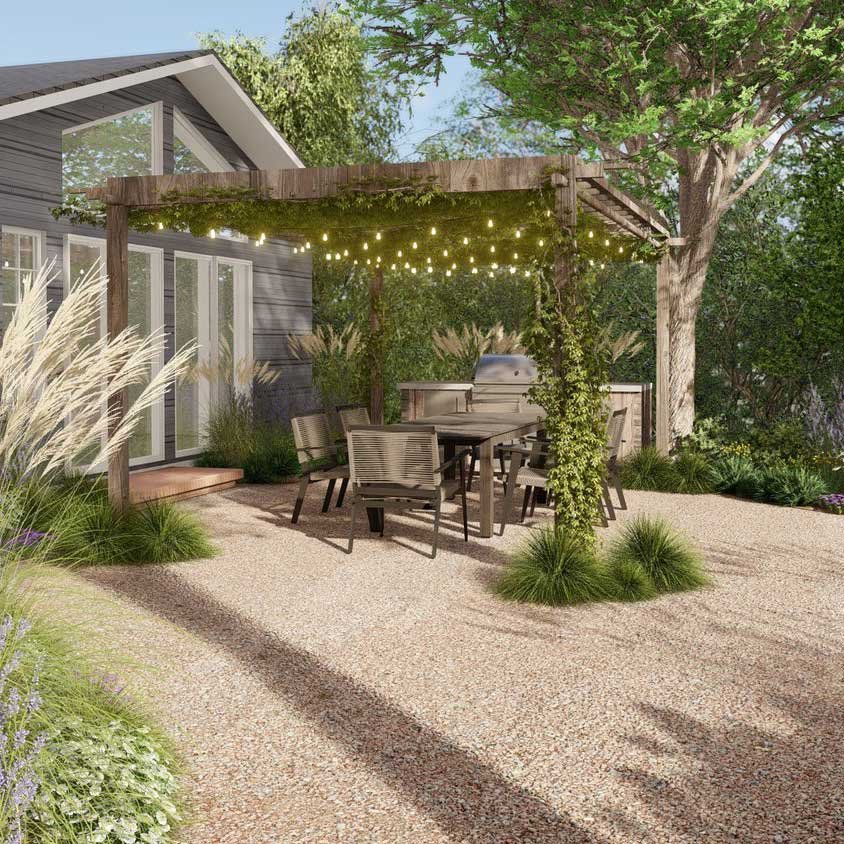Landscapers - Truths
Landscapers - Truths
Blog Article
The 4-Minute Rule for Landscapers
Table of ContentsLandscapers Fundamentals ExplainedThe Best Guide To LandscapersThe Main Principles Of Landscapers 7 Simple Techniques For Landscapers5 Simple Techniques For LandscapersThe smart Trick of Landscapers That Nobody is Talking About
- A garden feature where water is stood for by an aggregate rock product, generally a crushed rock or granite. These are most typically discovered in modern-day and Japanese yard style.- A stone or natural flagstone patio, course, or sidewalk developed without a concrete base. The base would be compressed crushed rock and the joints would be an accumulation or walkable ground cover. - A stone keeping or complimentary standing wall surface built without the usage of mortar. An extremely experienced mason is required for a dry pile rock wall. Most walls in Portland are moist stacked, even if they show up to be. - A below ground structure that accumulate water and enables it to slow percolate into the soil around it.
Landscape design that is compatible with a websites' atmosphere in both look and sustainability without negative effects to the setting. Bordering in the landscape is a line of demarcation that creates aesthetic interest in the garden by dividing one sector from another sector.
Locations can also have a feeling of "room" offered by trees, other growings, fences, or displays. The landscape near the access to a building.
Landscapers Can Be Fun For Everyone

The component in a landscape layout or area in a landscape that is indicated to be most famous. The prime focus can be a plant, stone, sculpture, collecting area, or various other landscape function. A style of gardens or garden elements that worry straight lines, right angles and circles. Bushes or hedges located in beds near the structure of a home or various other structure.

Some Known Incorrect Statements About Landscapers
Rock item, either rounded or fractured, that is fairly small- typically 1" or much less. Low plants that are allowed or urged to top a location. Can describe any kind of "difficult" garden aspects including statuary or rocks yet the majority of commonly is utilized to refer to courses, patios, and walls.: Elevation difference in between the level of water in a pond (or the degree of the pump if it rests outside the fish pond) and the upper electrical outlet of water which affects performance of the water pump in gph (gallons per hour). Thick bushes or trees that create a fence, display, or border.
Fencing boards that run horizontally, commonly used in modern or Japanese-inspired landscape designs. Correct usage of fictional lines can help the landscape really feel connected to the home and various other elements.
An even more unwinded garden controlled by rounded instead of straight bed lines and a much less stiff framework. Typical PNW landscapes are informal. A plant that spreads out even more than desired, or right into environments where it does damages. Portland has a checklist of invasive plants that must not be set up in landscapes because they can infect forests or waterways and be difficult to regulate.
Landscapers - An Overview
Can consist of head placements and protection, pipeline sizing, GPM specifications, and materials why not look here required to mount this system. Accredited professional that designs landscapes, coached in engineering and architecture as well as in gardening.
Landscape developers normally have much less education than Landscape Architects and are not licensed. A completed landscape style, detailing all elements for the new landscape.
Making use of many growings of the exact same variety to load in a location in the landscape. This can reduce upkeep and water use in the yard.
A layer of compost or bark dirt used at the base of a plant. A plant that was present in a geographic place prior to individuals started transforming the landscape.
The 30-Second Trick For Landscapers
Just how the yard or a yard component is organized in connection to an existing or brand-new function or to an instructions. Turfs that are not mowed however grown in landscapes as perennials.

Little round visit this website gravel. Plants that give seasonal interest and then pass away back in the winter months. Annuals do not come back the following period, but perennials do. Winter season turf that is one of the most common lawn lawn in Portland, OR et cetera of the PNW.An open roofed framework over a patio area or other landscape attribute.
Basalt aggregate varying in dimension from 1/4" down to dust. One of the most common landscape crushed rock in the PNW. Area of the landscape made to deal with water up until it can saturate into the ground. A chain that controls water as it travels from a roof gutter to the ground. Garden structure that develops a growing location that is contained and more than the surrounding grade.
Structure constructed from timber, concrete, paving rocks, bricks or other materials for stabilizing inclines and preventing too much erosion. Slim watercourse. Developing a Web Site yard function consisting primarily of stones with growings that match and can thrive in the rocky setting. Lawn sprinkler head style that rotates a stream of water across a location.
8 Simple Techniques For Landscapers

Report this page